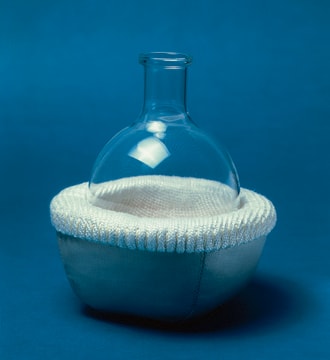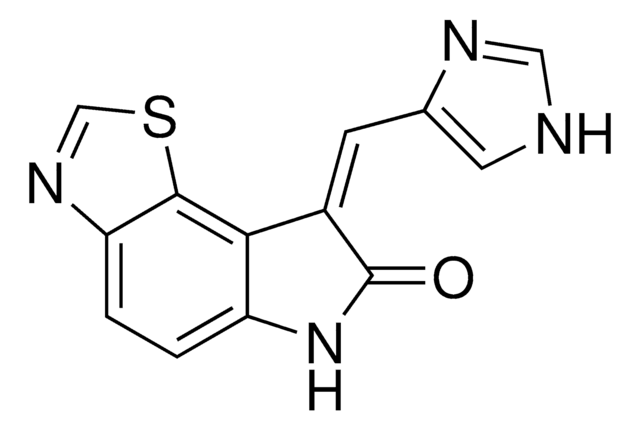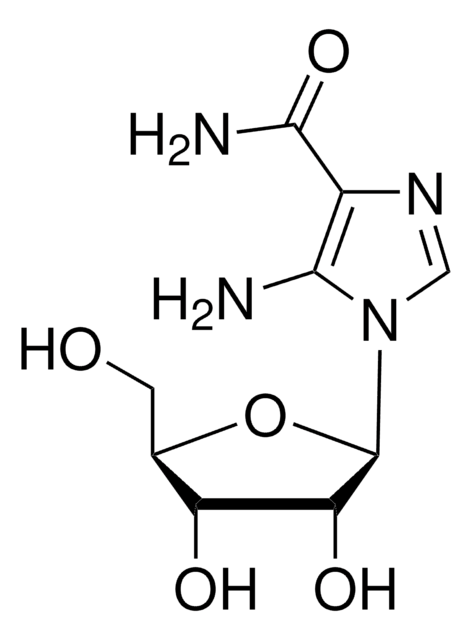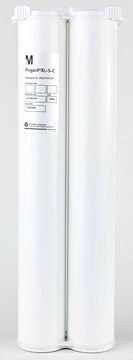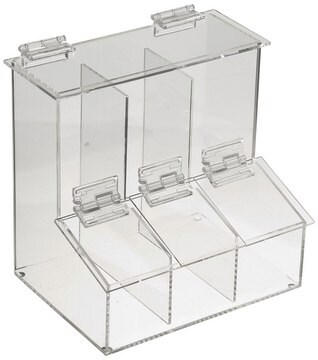推薦產品
生物源
rabbit
品質等級
抗體表格
affinity purified immunoglobulin
無性繁殖
polyclonal
物種活性
vertebrates, human
製造商/商標名
ChIPAb+
Upstate®
技術
ChIP: suitable
immunoprecipitation (IP): suitable
western blot: suitable
NCBI登錄號
UniProt登錄號
運輸包裝
dry ice
一般說明
All ChIPAb+ antibodies are individually validated for chromatin precipitation, every lot, every time. Each ChIPAb+ antibody set includes control primers (tested every lot by qPCR) to biologically validate your IP results in a locus-specific context. The qPCR protocol and primer sequences are provided, allowing researchers to validate ChIP protocols when using our antibody in their chromatin context. Each set also includes a negative control antibody to ensure specificity of the ChIP reaction.
The ChIPAb+ Acetyl-Histone H4 (Lys16) set includes the Acetyl-Histone H4 (Lys16) antibody, a negative control normal rabbit IgG, and qPCR primers which amplify a 178 bp region of human RPL10 promoter. The Acetyl-Histone H4 (Lys16) and negative controls are supplied in a scalable "per ChIP" reaction size and can be used to functionally validate the precipitation of Acetyl-Histone H4 (Lys16)-associated chromatin.
The ChIPAb+ Acetyl-Histone H4 (Lys16) set includes the Acetyl-Histone H4 (Lys16) antibody, a negative control normal rabbit IgG, and qPCR primers which amplify a 178 bp region of human RPL10 promoter. The Acetyl-Histone H4 (Lys16) and negative controls are supplied in a scalable "per ChIP" reaction size and can be used to functionally validate the precipitation of Acetyl-Histone H4 (Lys16)-associated chromatin.
特異性
Broad species cross-reactivity is expected based on sequence homology.
This antibody detects histone H4 acetylated at Lys16.
免疫原
Epitope: Acetylated H4 Lys16
KLH-conjugated Histone H4 corresponding to the N-terminus region at and around acetylated Lys16.
應用
Chromatin Immunoprecipitation:
Representative lot data.
Sonicated chromatin prepared from HeLa cells (1 X 10E6 cell equivalents per IP) were subjected to chromatin immunoprecipitation using either 2 µg of Normal rabbit IgG or 2 µL of Anti-acetyl-Histone H4 (Lys16) and the Magna ChIP A Kit (Cat. # 17-610).
Successful immunoprecipitation of acetyl-Histone H4 (Lys16) associated DNA fragments was verified by qPCR using ChIP Primers, RPL10 Promoter as a positive locus, and β-Globin primers as a negative locus. (Please see figures). Data is presented as percent input of each IP sample relative to input chromatin for each amplicon and ChIP sample as indicated.
Please refer to the EZ-Magna ChIP A (Cat. # 17-408) or EZ-ChIP (Cat. # 17-371) protocol for experimental details.
Western Blot Analysis:
Representative lot data.
Recombinant Histone H4 (Cat # 14-697) (lane1) and HeLa acid extract (lane 2) was resolved by electrophoresis, transferred to PVDF and probed with anti-Acetyl Histone H4 (Lys16) (0.1 μg/mL).
Proteins were visualized using a donkey anti-rabbit secondary antibody conjugated to HRP and a chemiluminescence detection system.
Arrow indicates Acetyl Histone H4 (Lys16) (~10 kDa) (Please see figures).
Multiplexing (Luminex):
Representative lot data.
This antibody specifically recognizes histone H4 acetylated on Lys16 by Luminex assay (Please see figures).
Peptide Inhibition Assay:
Representative lot data.
This antibody peptide blocked on HeLa cell extracts (Please see figures).
Representative lot data.
Sonicated chromatin prepared from HeLa cells (1 X 10E6 cell equivalents per IP) were subjected to chromatin immunoprecipitation using either 2 µg of Normal rabbit IgG or 2 µL of Anti-acetyl-Histone H4 (Lys16) and the Magna ChIP A Kit (Cat. # 17-610).
Successful immunoprecipitation of acetyl-Histone H4 (Lys16) associated DNA fragments was verified by qPCR using ChIP Primers, RPL10 Promoter as a positive locus, and β-Globin primers as a negative locus. (Please see figures). Data is presented as percent input of each IP sample relative to input chromatin for each amplicon and ChIP sample as indicated.
Please refer to the EZ-Magna ChIP A (Cat. # 17-408) or EZ-ChIP (Cat. # 17-371) protocol for experimental details.
Western Blot Analysis:
Representative lot data.
Recombinant Histone H4 (Cat # 14-697) (lane1) and HeLa acid extract (lane 2) was resolved by electrophoresis, transferred to PVDF and probed with anti-Acetyl Histone H4 (Lys16) (0.1 μg/mL).
Proteins were visualized using a donkey anti-rabbit secondary antibody conjugated to HRP and a chemiluminescence detection system.
Arrow indicates Acetyl Histone H4 (Lys16) (~10 kDa) (Please see figures).
Multiplexing (Luminex):
Representative lot data.
This antibody specifically recognizes histone H4 acetylated on Lys16 by Luminex assay (Please see figures).
Peptide Inhibition Assay:
Representative lot data.
This antibody peptide blocked on HeLa cell extracts (Please see figures).
Research Category
Epigenetics & Nuclear Function
Epigenetics & Nuclear Function
Research Sub Category
Histones
Histones
This ChIPAb+ Acetyl-Histone H4 (Lys16) -ChIP Validated Antibody & Primer Set conveniently includes the antibody & the specific control PCR primers.
包裝
25 assays per set. Recommended use: ~2 μL of antibody per chromatin immunoprecipitation (dependent upon biological context).
品質
Chromatin Immunoprecipitation:
Sonicated chromatin prepared from HeLa cells (1 X 10E6 cell equivalents per IP) were subjected to chromatin immunoprecipitation using either 2 µg of Normal Rabbit IgG or 2 µL of Anti-acetyl-Histone H4 (Lys16) and the Magna ChIP® A Kit (Cat. # 17-610).
Successful immunoprecipitation of acetyl-Histone H4 (Lys16) associated DNA fragments was verified by qPCR using ChIP Primers, RPL10 Promoter (Please see figures).
Please refer to the EZ-Magna ChIP A (Cat. # 17-408) or EZ-ChIP (Cat. # 17-371) protocol for experimental details.
Sonicated chromatin prepared from HeLa cells (1 X 10E6 cell equivalents per IP) were subjected to chromatin immunoprecipitation using either 2 µg of Normal Rabbit IgG or 2 µL of Anti-acetyl-Histone H4 (Lys16) and the Magna ChIP® A Kit (Cat. # 17-610).
Successful immunoprecipitation of acetyl-Histone H4 (Lys16) associated DNA fragments was verified by qPCR using ChIP Primers, RPL10 Promoter (Please see figures).
Please refer to the EZ-Magna ChIP A (Cat. # 17-408) or EZ-ChIP (Cat. # 17-371) protocol for experimental details.
標靶描述
~10 kDa observed
外觀
Affinity purified
Anti-Acetyl-Histone H4 (Lys16) (rabbit polyclonal). One vial containing 50 µL of affinity purified rabbit polyclonal serum in buffer containing 0.1 M Tris-Glycine (pH 7.4) 150 mM NaCl with 0.05% sodium azide. Store at -20°C.
Normal Rabbit IgG. One vial containing 125 µg of rabbit IgG in 125 µL of storage buffer containing 0.05% sodium azide. Store at -20°C.
ChIP Primers, RPL10 promoter. One vial containing 75 μL of 5 μM of each primer specific for the promoter region of human RPL10. Store at -20°C.
FOR: ACC CGT CTT CGA CAG GAC T
REV: GGA ACG GAA GAC GAG AAC AG
Normal Rabbit IgG. One vial containing 125 µg of rabbit IgG in 125 µL of storage buffer containing 0.05% sodium azide. Store at -20°C.
ChIP Primers, RPL10 promoter. One vial containing 75 μL of 5 μM of each primer specific for the promoter region of human RPL10. Store at -20°C.
FOR: ACC CGT CTT CGA CAG GAC T
REV: GGA ACG GAA GAC GAG AAC AG
Format: Purified
儲存和穩定性
Stable for 1 year at -20°C from date of receipt. Handling Recommendations: Upon first thaw, and prior to removing the cap, centrifuge the vial and gently mix the solution. Aliquot into microcentrifuge tubes and store at -20°C. Avoid repeated freeze/thaw cycles, which may damage IgG and affect product performance.
分析報告
Control
Includes negative control normal rabbit IgG and primers specific for human RPL10 promoter.
Includes negative control normal rabbit IgG and primers specific for human RPL10 promoter.
法律資訊
MAGNA CHIP is a registered trademark of Merck KGaA, Darmstadt, Germany
UPSTATE is a registered trademark of Merck KGaA, Darmstadt, Germany
免責聲明
Unless otherwise stated in our catalog or other company documentation accompanying the product(s), our products are intended for research use only and are not to be used for any other purpose, which includes but is not limited to, unauthorized commercial uses, in vitro diagnostic uses, ex vivo or in vivo therapeutic uses or any type of consumption or application to humans or animals.
儲存類別代碼
12 - Non Combustible Liquids
閃點(°F)
Not applicable
閃點(°C)
Not applicable
分析證明 (COA)
輸入產品批次/批號來搜索 分析證明 (COA)。在產品’s標籤上找到批次和批號,寫有 ‘Lot’或‘Batch’.。
Keisuke Mori et al.
PloS one, 9(1), e87319-e87319 (2014-02-06)
We previously reported that sevoflurane anesthesia reversibly suppresses the expression of the clock gene, Period2 (Per2), in the mouse suprachiasmatic nucleus (SCN). However, the molecular mechanisms underlying this suppression remain unclear. In this study, we examined the possibility that sevoflurane
Histone deacetylation of NIS promoter underlies BRAF V600E-promoted NIS silencing in thyroid cancer.
Zongjing Zhang et al.
Endocrine-related cancer, 21(2), 161-173 (2013-11-19)
The BRAF V600E mutation causes impaired expression of sodium iodide symporter (NIS) and radioiodine refractoriness of thyroid cancer, but the underlying mechanism remains undefined. In this study, we hypothesized that histone deacetylation at the NIS (SLC5A5) promoter was the mechanism.
Xavier Brenachot et al.
Molecular metabolism, 3(6), 619-629 (2014-08-28)
Overfeeding causes rapid synaptic remodeling in hypothalamus feeding circuits. Polysialylation of cell surface molecules is a key step in this neuronal rewiring and allows normalization of food intake. Here we examined the role of hypothalamic polysialylation in the long-term maintenance
Davide Gaglio et al.
PloS one, 8(12), e83114-e83114 (2013-12-19)
Sirtuins, class III histone deacetylases, are proteins homologous to the yeast protein Sir2p. Mammalian Sirt1 has been shown to be involved in energy metabolism, brain functions, inflammation and aging through its deacetylase activity, acting on both histone and non-histone substrates.
Min Huang et al.
PloS one, 7(4), e35139-e35139 (2012-04-18)
Our previous study demonstrated that 45S ribosomal DNA (45S rDNA) clusters were chromosome fragile sites expressed spontaneously in Lolium. In this study, fragile phenotypes of 45S rDNA were observed under aphidicolin (APH) incubation in several plant species. Further actinomycin D
我們的科學家團隊在所有研究領域都有豐富的經驗,包括生命科學、材料科學、化學合成、色譜、分析等.
聯絡技術服務
